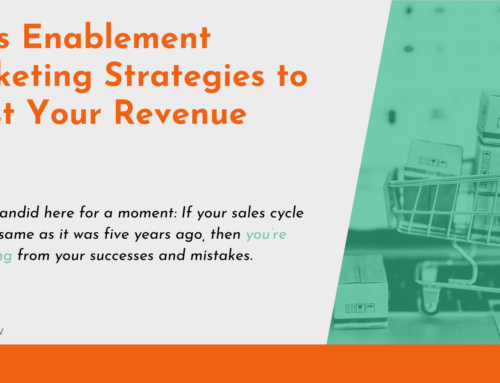
Measuring success as a marketer is crucial for several reasons. First, you have concrete proof that what you’re doing works or doesn’t work. Not only does this help you justify the work you’re doing, but also this information can be used to tweak, overhaul, or even scrap your current marketing campaigns.
Second, you can determine where your budget has the biggest effect on your bottom line and adjust the investments into your success accordingly. With proof that what you’re doing is working, you can introduce new strategies into your marketing mix to make the most of the budget you have at your disposal.
Finally, you can use the information you glean from your data to develop new campaigns that are more likely to bring success. With proof that what you’re doing is working, you can apply that knowledge to future marketing efforts to experience results without expensive trial and error.
Before you can make use of your ROI information, you must calculate it. There are a few different ROI formulas you can use to really drill down to the numbers you need.
Before we take a look at your options, first consider the number you’d like to use for “Sales Growth.” If you’ve ever prepared ROI reports, only to have the CFO or another executive ask, “Did you account for the cost of X?“ then you already know where this is going. Your choice will affect the final number, but you’ll learn a lot about the true impact of your marketing.
Most calculate ROI by starting with total revenue, or all the money that came into the company during a particular campaign. This is a holistic number that may not take into account other costs, but it’s often a great starting point for planning media strategy and budgeting.
If you need to take the cost of manufacturing or delivery into account, you’ll want to start your formula with the gross profit. Just add (Total Revenue – Cost) to the beginning of the following formulas.
You may also need to dig a little deeper and include additional expenses before you work the formula. This would mean starting your formula with the net profit. Just add the number from the above formula to the beginning and subtract additional expenses, like this: (Gross Profit – Additional Expenses).
Now we’re ready to look at the ROI formulas.
The Straightforward Option
The most commonly used of the ROI formulas is (Sales Growth – Marketing Cost) / Marketing Cost = ROI. This formula takes into account all sales growth, minus the money spent to market, and then divides again by the marketing cost.
This is adequate for many scenarios, but there is a drawback. This model doesn’t consider organic sales, or those sales that occurred without the need for marketing activities. If you don’t have a system in place to determine sales attribution—as in, where those sales came from—then this formula is all you have to go on. That’s why most marketers use it.
If you do have an attribution model in place, then you can get an even better idea of your marketing return.
The Attribution Option
By taking into account those sales that came through organic channels, you get a better idea of how your marketing efforts are impacting your bottom line. That formula looks like this: (Sales Growth – Organic Sales Growth – Marketing Cost) / Marketing Cost = ROI.
This number, while likely smaller than the number you’d receive from the straightforward formula above, is quite powerful, as it fully encompasses the impact your marketing strategies have on your sales. There will be no “What about…” questions from other executives, as this formula focuses entirely on the return on the marketing investment.
The attribution option can also further break down your marketing activities to ensure you’re always getting the most for your money. Social media channels, SEO, paid media, content marketing—each of your activities can be examined and improved in order to continually improve the return on your investment.
The LTV Option
The first two ROI formulas provide a granular look at your marketing activities. They can be used for shorter time periods to gauge success of a particular campaign, but as far as a broad, lifetime look at the success of your marketing, they may not be as helpful. Sure, you can get a general idea of how successful your marketing activities have been over time, but there’s another formula that can give you an even more powerful number: the Customer Lifetime Value.
This formula looks like this: (Average Sale) x (Number of Repeat Sales) x (Average Retention Time) = Lifetime Value. You can simplify this a bit with (Customer Value) x (Average Retention Time), but you may need to dig a little deeper to determine the average customer value.
This number tells you a lot of things, such as how much customers are spending, how often they make a purchase, and how many customers you retain over time. This is crucial information because selling to an existing customer is easier and less expensive than acquiring new ones.
Your first two formulas may give you an idea of how much you’re selling and how much you’re spending, but what if you could spend less to market and bring back the same customers again and again, in addition to acquiring new buyers?
The LTV formula tells you how successful you’ve been with customer retention over time, which can help you devise retention strategies as a part of your overall marketing plan.
For both granular and broad looks at your marketing success, all three formulas are important, and any marketing executive should not only be aware of them but also know the best times to use them. If you’d like to discuss how to determine your ROI and how we can help you increase those numbers, reach out any time.





